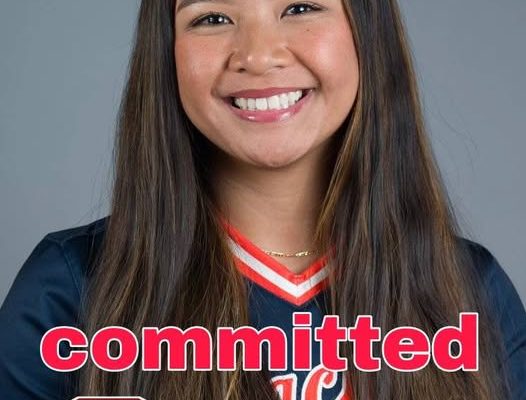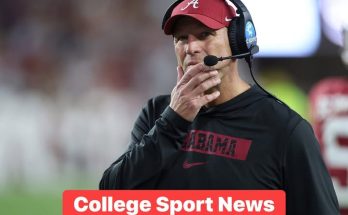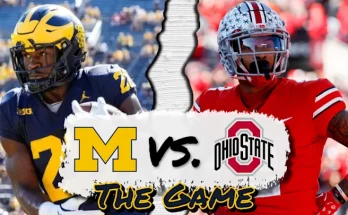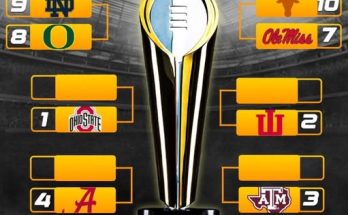The world of college football recruiting is one of fierce competition, passionate fanbases, and life-altering decisions made by high school athletes barely old enough to vote. When the No. 1-ranked football recruit in the nation makes his commitment, it doesn’t just send ripples through the landscape—it creates shockwaves. That’s exactly what happened when the most coveted high school football prospect in the 2025 class chose to commit to the University of Oklahoma over powerhouse programs like Alabama, Tennessee, and BYU. It wasn’t just a win for Oklahoma—it was a statement of intent and a reshuffling of the college football hierarchy for the foreseeable future.
The recruit in question—whose name has become synonymous with dominance on the gridiron—is a generational talent. A five-star athlete who plays both quarterback and defensive back, his highlight tapes look more like superhero montages. Standing at 6’4″, weighing 215 pounds, and boasting blazing 4.4 speed, scouts have been comparing him to a mix between Cam Newton and Charles Woodson. But even that doesn’t quite do justice to what he brings to the field. With elite vision, unmatched footwork, and a relentless work ethic, he’s the type of player who doesn’t just impact games—he defines them.
For months, speculation ran rampant about where he would land. Alabama, with its national championship pedigree and recent return of Nick Saban as Senior Coaching Advisor, was thought to be the favorite. Tennessee, fueled by a resurgence under their current coaching regime and an aggressive NIL strategy, made a compelling pitch. BYU, meanwhile, offered a faith-based culture and a unique identity that appealed to the recruit’s values and personal background. Each school brought something powerful to the table: prestige, opportunity, and massive fan support. But it was Oklahoma that won the battle—and not by accident.
Oklahoma’s recruiting team, led by head coach Brent Venables and offensive coordinator Jeff Lebby, put together a strategic and personalized campaign that made the prospect feel not just wanted, but needed. They flew out to every one of his high school games, invited him to private sessions with Sooner legends, and presented a development plan that focused on preparing him for the NFL from day one. While the other programs highlighted their past glories, Oklahoma sold him the future—and made him the centerpiece of it. That level of commitment paid off in a monumental way.
The announcement itself was nothing short of cinematic. Held at his high school gymnasium in front of a packed crowd of family, friends, teammates, media, and curious onlookers, the stage was set with hats from each finalist program laid out on the table. Tension built as the cameras rolled. Then, with a confident smile, he reached for the crimson and cream Oklahoma cap and put it on, sending the crowd into an eruption and igniting an inferno of reactions online. The choice immediately trended across social media platforms, with fans, analysts, and even current college players weighing in on what it meant.
For Oklahoma, this commitment represents more than just a major recruiting win—it’s a validation of their direction under Venables. Since taking over, he’s emphasized discipline, player development, and a return to physical, dominant football. Landing the No. 1 recruit proves that the program isn’t just talking the talk. It’s walking it. The Sooners are moving into the SEC, and the narrative has long been that they would struggle to keep up with the conference’s elite. But securing a prospect of this magnitude flips that script and signals that Oklahoma plans not just to compete—but to contend.
For Alabama, the loss stings deeply. The Crimson Tide, known for routinely landing top-ranked classes, had hoped that the Saban return would tip the scales in their favor. Their pitch revolved around legacy, tradition, and a proven pipeline to the NFL. But this time, it wasn’t enough. While Alabama will continue to be a dominant force in recruiting, missing out on a player of this caliber feels like a rare miss, and it raises questions about how the program is adjusting to the rapidly changing recruiting landscape shaped by NIL deals and athlete empowerment.
Tennessee’s disappointment is equally palpable. The Volunteers have made tremendous strides in recent years and have been aggressive in leveraging NIL collectives to attract top talent. Many insiders believed Tennessee had a real shot down the stretch, especially after hosting the recruit on multiple visits where he bonded closely with players and staff. But in the end, the relationship with Oklahoma’s staff and the vision they laid out proved too compelling.
BYU, while seen as the underdog in this race, can hold their heads high. They made a strong push and stood out with their family-first approach and values-based environment. In fact, many analysts believe that if Oklahoma hadn’t executed such a flawless recruitment strategy, BYU may have pulled off one of the biggest recruiting upsets in recent memory. Their involvement in this recruitment alone raises their profile and shows that they’re capable of being in the mix for elite talent, even if they ultimately fall short.
As for the player himself, he made it clear in his post-announcement interview that his decision was about much more than just football. He emphasized the relationships he’d built with the coaching staff, the comfort he felt in Norman, and the belief that Oklahoma gave him the best chance to achieve his personal and professional goals. He spoke about wanting to be a part of building something special and leaving a legacy that others could follow. That kind of maturity and focus only adds to the perception that he’s not just an exceptional athlete, but a grounded and driven young man.
The commitment has already sent recruiting dominos tumbling. Other recruits—both committed and undecided—are now re-evaluating their options in light of his decision. Several top receivers and offensive linemen have hinted on social media that they’re strongly considering joining him at Oklahoma. The potential for a super-class is real, and the Sooners are wasting no time capitalizing on the momentum. This type of recruiting momentum can change a program’s trajectory, and Oklahoma knows it.
Beyond recruiting, the on-field implications are massive. Oklahoma has already been preparing for life in the SEC, and landing a generational player to build around accelerates that process dramatically. Depending on how quickly he adapts to the college level, he could start as a true freshman and potentially lead the Sooners to heights not seen since their national title run in the early 2000s. He’s the type of player who can change the outcome of every game, elevate everyone around him, and give Oklahoma a legitimate shot at competing with the likes of Georgia, LSU, and yes, even Alabama.
The ripple effect will also be felt in media coverage, ticket sales, merchandise, and even donor contributions. Oklahoma’s fanbase is already buzzing, and the school’s official website reportedly crashed within minutes of the announcement due to a surge in traffic. Local businesses, boosters, and alumni associations are jumping on board, seeing this as the start of a new era. Recruiting may be about players, but it affects every corner of a college athletic program.
There’s also a cultural dimension to this decision. In a sport where athletes are increasingly mindful of branding, identity, and community, Oklahoma offered more than just a football opportunity—it offered a platform. The school’s growing NIL infrastructure, its strong alumni network, and its presence on national television make it an appealing place for athletes who want to be more than just players. And in this new age of college athletics, those factors matter just as much as depth charts and schemes.
As for the future, all eyes will be on Norman. The spotlight will be bright, and the expectations even brighter. But by all accounts, this young man is ready for it. He’s been groomed for greatness, and now he’ll have a chance to fulfill that promise on one of college football’s biggest stages. For fans of the sport, it’s the kind of storyline that makes recruiting season feel like the playoffs—full of drama, emotion, and high stakes.
When the dust settles, this commitment will be remembered not just for who he chose, but for how it reshaped the recruiting landscape. Oklahoma didn’t just land a player—they landed the player. And in doing so, they reminded the college football world that their seat at the table isn’t just secure—it’s getting bigger. This isn’t just a win for the Sooners. It’s a signal that the future of college football runs through Norman, and the No. 1 recruit just became the face of that future.



